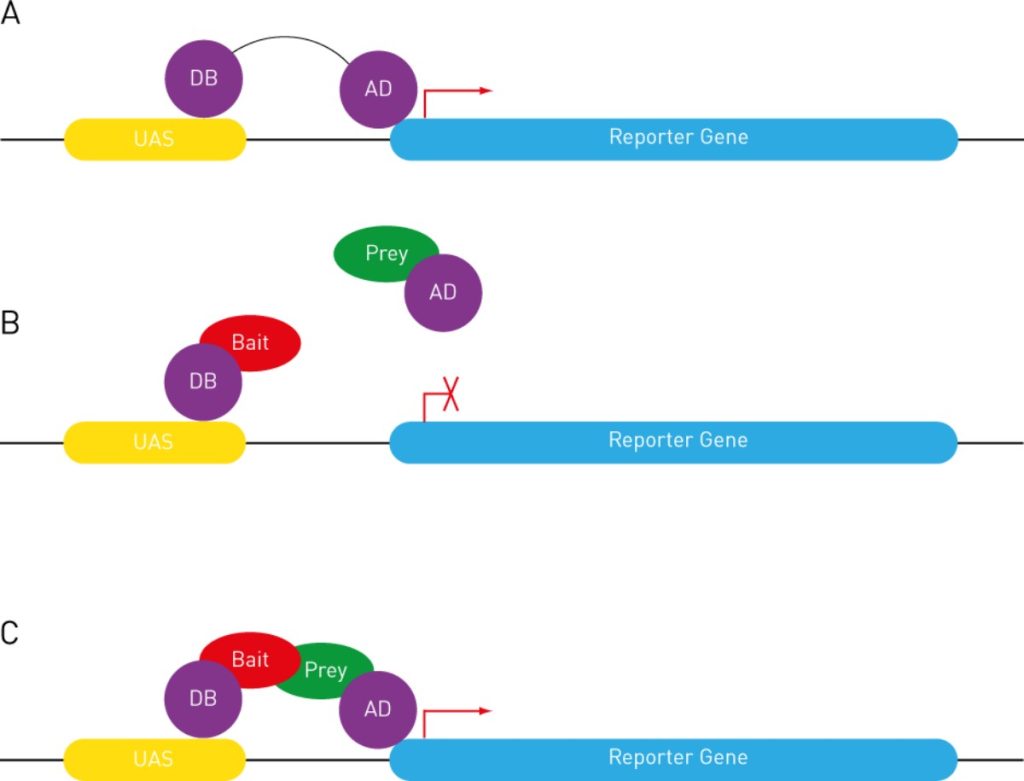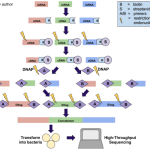
The development and gradual improvements of the yeast two-hybrid system since the early 90’s revolutionized the way protein interactions could be detected1.
Yeast two-hybrid is based on the reconstitution of a functional transcription factor (TF) when two proteins or polypeptides of interest interact. This takes place in genetically modified yeast strains, in which the transcription of a reporter gene leads to a specific phenotype, usually growth on a selective medium or change in the color of the yeast colonies. The most popular reporter genes are HIS3 to select yeast on a medium lacking histidine, and LacZ to screen yeast in a colorimetric assay.
The technical details are outlined in the cartoon below.
Two fusions (‘hybrids’) are constructed between each protein of interest and either the DNA Binding Domain (DBD) or the Activation Domain (AD) of the TF. The protein fused to the DBD is referred to as the ‘bait’, and the protein fused to the AD as the ‘prey’.
Upon interaction between the bait and the prey, the DBD and AD are brought in close proximity and a functional TF is reconstituted upstream of the reporter gene. The most popular fusions use the DBD and AD of the yeast TF Gal4. The bacterial protein LexA is also frequently used as a DBD in combination with Gal4 AD.
As a genetic technique, yeast two-hybrid offers a sensitive and cost-effective mean to test the direct interaction between two targeted proteins, or to use one’s favorite protein as a bait to screen libraries of proteins fragments prepared from the desired cell types, tissues or entire organisms. The identity of the interacting partners is then obtained by sequencing the corresponding plasmids in the selected yeast colonies. Collections of full-length proteins (‘ORFeomes’) are also becoming available for several species, but they do not cover the entire proteome yet.
Yeast two-hybrid was rapidly adopted by the scientific community and screens in various species and research fields already led to dozens of thousands of publications. It remains the method of choice when it comes to discover novel protein interactions, as reflected by the recently published literature.

Variations of the yeast two-hybrid were developed to conduct screens in the presence of a co-factor, or an enzyme required for a given post-translational modification of the protein partners2. Other versions allow to screen integral membrane proteins3 and the technique was adapted to detect protein-protein interactions in mammalian cells4. Finally, yeast n-hybrid protocols were also devised to screen for novel DNA-protein5, RNA-protein6 and small molecule-protein interactions


